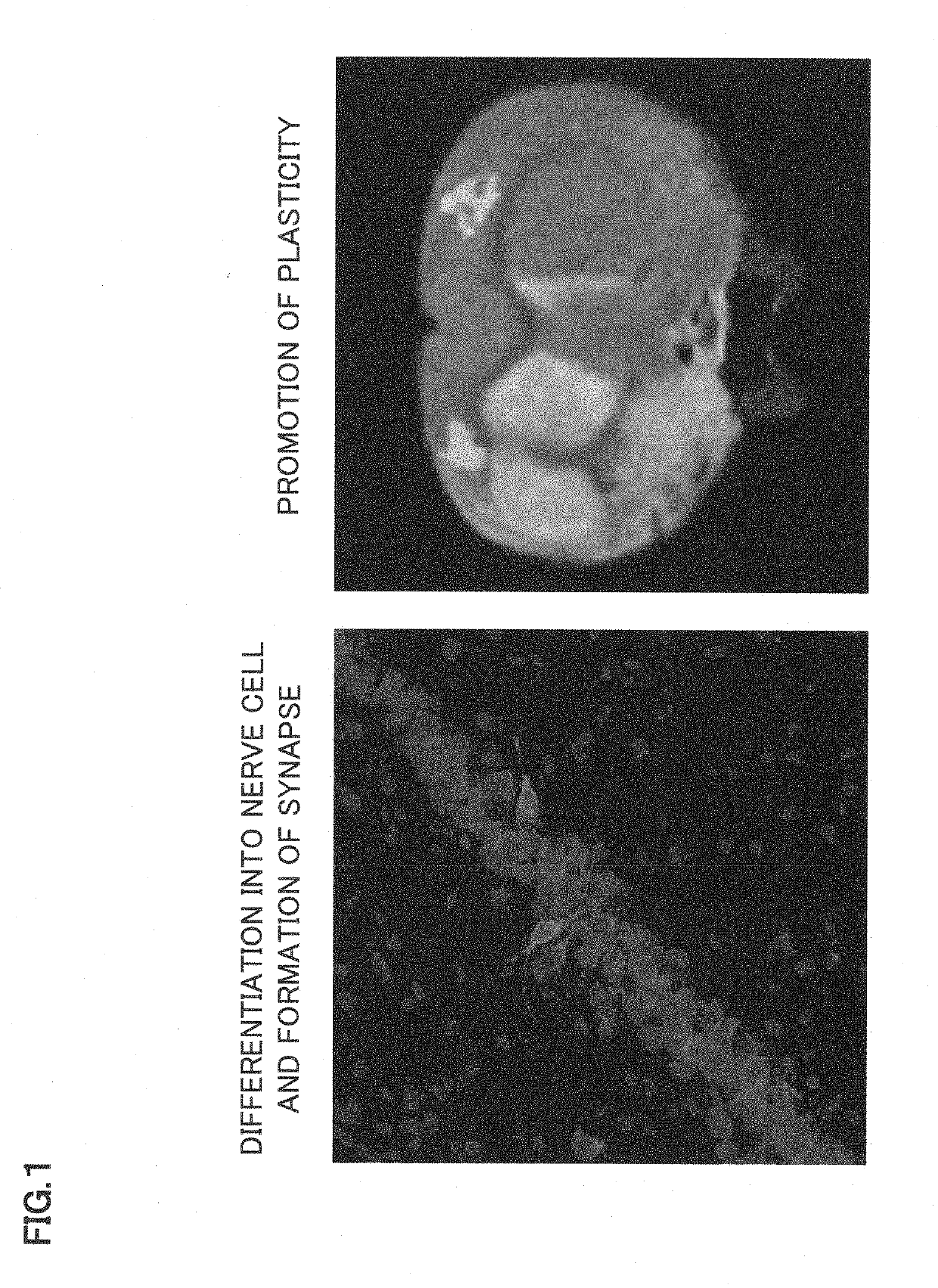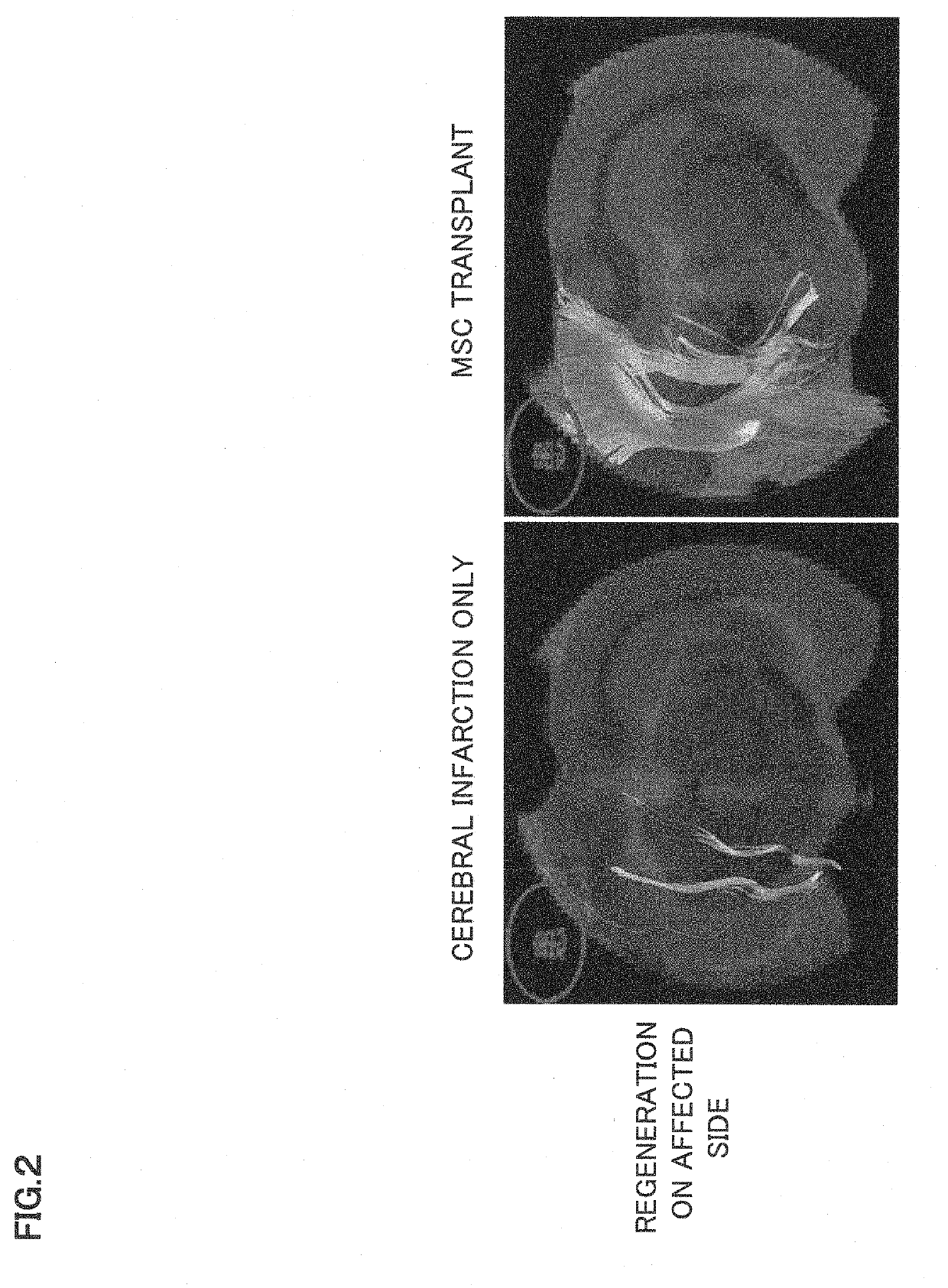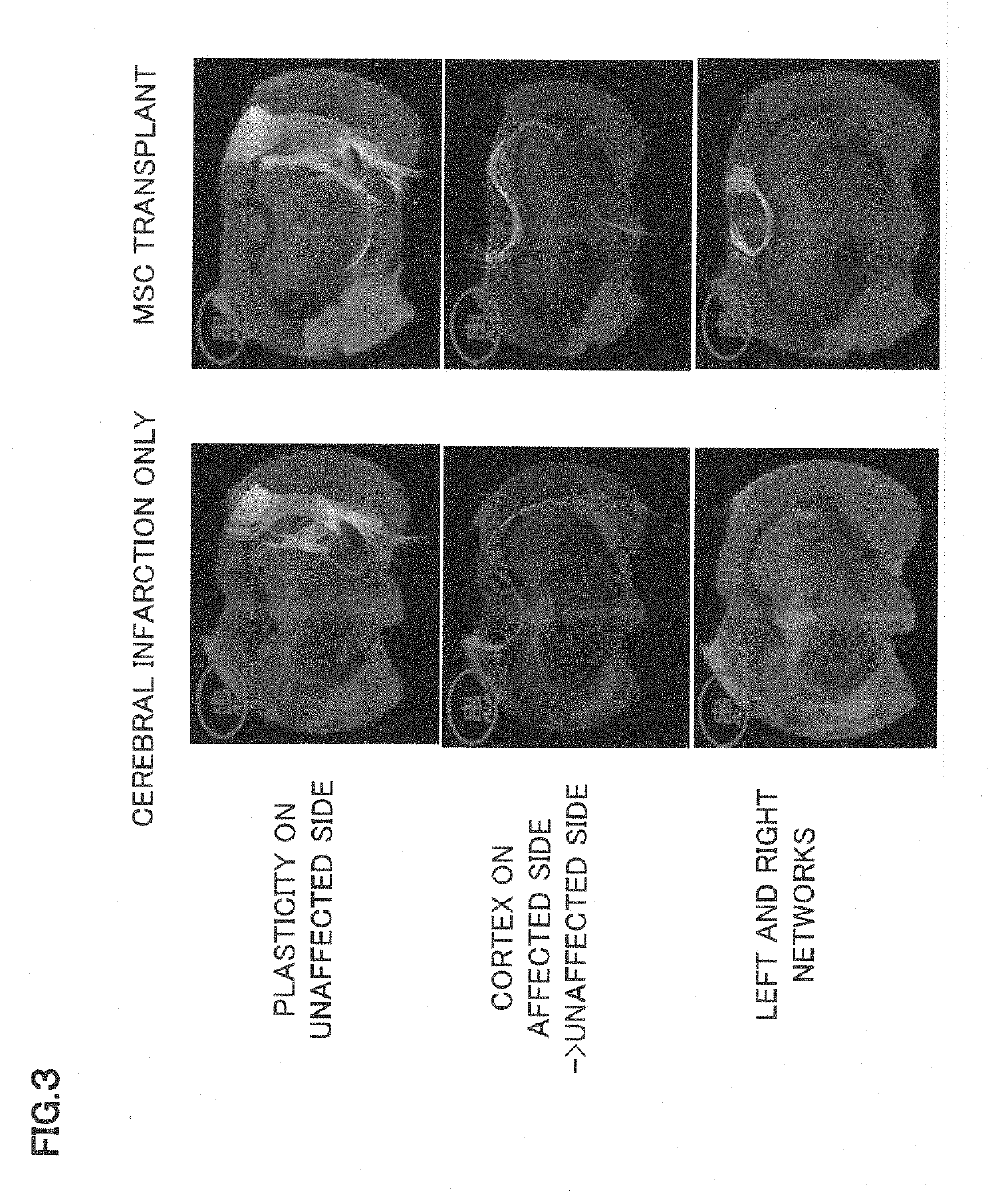Synapse formation agent
a brain plasticity promoter and mesenchymal stem cell technology, applied in the direction of skeletal/connective tissue cells, pharmaceutical delivery mechanisms, medical preparations, etc., can solve the problems of insufficient confirmation of the effect of mscs, limited studies on patients in chronic phase, and no mechanism by which cerebral infarction and spinal cord injury are treated by intravenous administration of mscs. to achieve the effect of restoring not only motor function, but promoting brain plasticity
- Summary
- Abstract
- Description
- Claims
- Application Information
AI Technical Summary
Benefits of technology
Problems solved by technology
Method used
Image
Examples
example 1
ormation and Promotion of Plasticity in Cerebral Infarction Rat
1. Materials & Methods
[0084](1) Preparation of Mesenchymal Stem Cells Derived from Rat Bone Marrow
[0085]The experiment was carried out in accordance with the institutional guidelines for Animal Experiments in Sapporo Medical University. According to previous reports, the bone marrow obtained from femoral bones of adult SD rats was diluted to 25 ml with Dulbecco's modified Eagle medium (DMEM) supplemented with 10% heat-inactivated FBS, 2 mM 1-glutamine, 100 U / ml penicillin, and 0.1 mg / ml streptomycin were added, and the bone marrow was incubated for 3 days at 37 degrees Celsius in 5% CO2 atmosphere (Kim S. et al., Brain Res. 2006, 1123:27-33. Ukai R. et al., J. Neurotrauma. 2007, 24:508-520.). The bone marrow was cultured until confluent and adherent cells were detached with trypsin-EDTA and passaged at a density of 1×104 cells / ml three times to obtain mesenchymal stem cells (MSCs).
(2) Cerebral Infarction Model
[0086]As a ...
example 2
ic Effect in Vascular Dementia Rat
[0106]Stroke-prone spontaneously hypertensive rats (SHRSP) develop dementia by having a disruption of the BBB (blood-brain barrier) due to high blood pressure and generating lacunar infarction or the like. Therefore, the effect of the administration of MSCs on dementia was examined by three methods: MWM (water maze test), NOR (novel object recognition test), and NOP (novel object placement test) in SHRSP rats as a vascular dementia model. NOR and NOP were conducted in week 1 before transplant, and week 1 and week 4 after transplant and MWM was conducted in week 5 after transplant.
1. Materials & Methods
(1) Vascular Dementia Model Rat (SHRSP Rat)
[0107]The SHRSP rats were purchased from Hoshino Laboratory Animals, Inc. These rats are stroke-prone spontaneously hypertensive rats established by selecting the offspring having a parent who died of stroke every generation and crossbreeding the offspring and vascular dementia model rats that develop dementia...
example 3
ic Effect on Patients with Chronic-Phase Cerebral Infarction
[0135]MSCs were intravenously administered to patients with chronic-phase cerebral infarction and the improvement of the higher function level was evaluated.
1. Method
[0136]Bone marrow aspirates were harvested from the ilium of patients with cerebral infarction under local anesthesia. Cells of interest were separated from the bone marrow aspirates in the Cell Processing Center (CPC) and cultured to obtain about 10000 times of cells in about 2 weeks. About 1×108 cells were enclosed in a bag with a capacity of about 40 ml under the GMP management to produce a cellular preparation. This cellular preparation was transplanted by intravenous administration for 30 minutes to 1 hour.
[0137]A placebo was administered for 150 days in the first half (Clinical trial I). MSCs were administered on day 150. Higher functions were evaluated until day 250 (Clinical trial II).
(1) Aphasia Quotient
[0138]The WAB aphasia test was performed on day 4...
PUM
 Login to View More
Login to View More Abstract
Description
Claims
Application Information
 Login to View More
Login to View More - R&D
- Intellectual Property
- Life Sciences
- Materials
- Tech Scout
- Unparalleled Data Quality
- Higher Quality Content
- 60% Fewer Hallucinations
Browse by: Latest US Patents, China's latest patents, Technical Efficacy Thesaurus, Application Domain, Technology Topic, Popular Technical Reports.
© 2025 PatSnap. All rights reserved.Legal|Privacy policy|Modern Slavery Act Transparency Statement|Sitemap|About US| Contact US: help@patsnap.com



